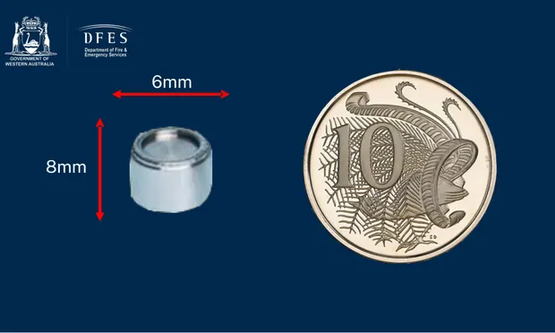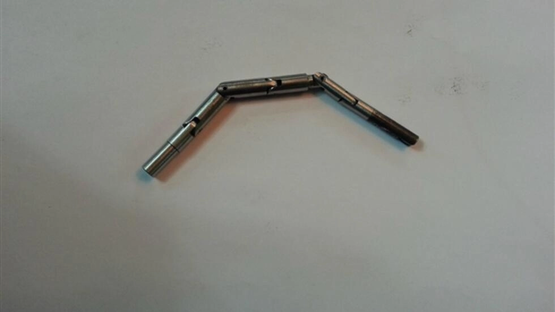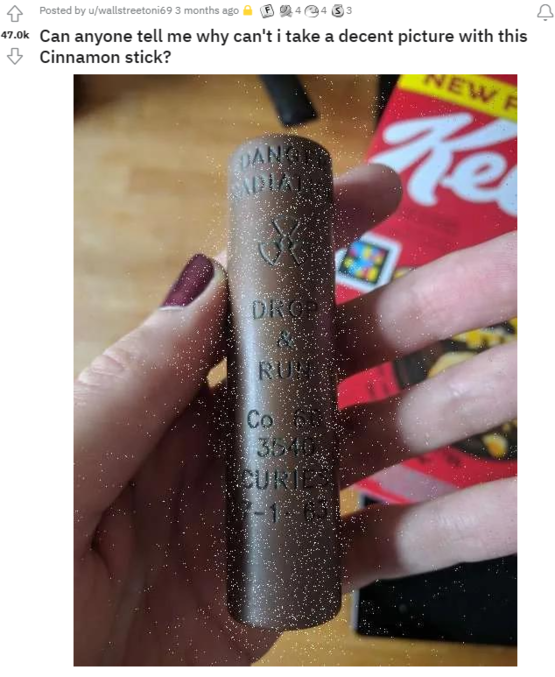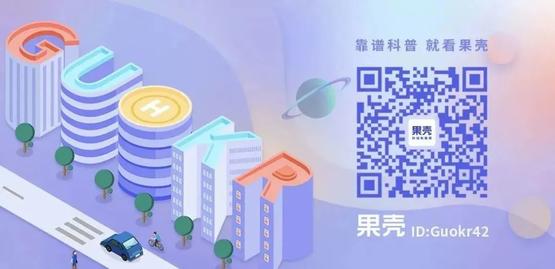Recently, in the western Australian desert, workers were searching for a radioactive source the size of a button battery along a 1,400-kilometer road.
How far is 1400 kilometers? It is about the same distance as driving from Beijing or Guangzhou to Shanghai.
Between January 12 and 16, a truck transported a load of equipment along the road from a mine in the Pilbara to Perth. Nine days after the truck arrived in Perth, people disassembled the cargo, only to find that a radioactive source was missing from one of the instruments, which had been loosened and dropped halfway.
The search was expected to take several weeks, but around Wednesday afternoon local time, local agencies announced that they had found the radioactive source about 2 meters from the road near Newman.
As outrageous as this accident may sound, accidents related to the loss of radioactive sources are far more common in industry than is generally believed , and some of them have had disastrous consequences.
In order to prevent accidents and injuries, not only the industry must strengthen standardized management, but ordinary people also need to know a little life-saving knowledge.
How could such an important thing be lost?
According to reports, the lost radioactive source this time contained cesium-137, which was made into a ceramic matrix composite material and encapsulated in a steel casing. This radioactive source is commonly used in instruments that detect the density of materials and the flow of liquids, often in the oil, gas, and mining industries. In this accident, the company involved was the multinational mining giant Rio Tinto.

The radioactive source lost this time measures 6 mm x 8 mm, less than the size of a coin | Department of Fire and Emergency Services WA
According to the “New York Times” report, the instrument was placed in a wooden box, fixed on a special shipping pallet, and loaded on a flatbed truck. Due to the bumps during driving, the radioactive source came loose and fell off. Unfortunately, a bolt on the box also fell off, and the radioactive source fell out of the hole left by the bolt and landed on the road.
People in the industry believe that this accident is very rare, because this type of instrument is designed for long-term outdoor operations, and it stands to reason that such critical small parts should not be loose and fall. Local police believe it was an accident.
It is possible that even Australian laws and regulations do not adequately consider the possibility of such accidents. According to local laws, the companies involved face a maximum fine of 1,000 Australian dollars (approximately RMB 4,800). Australian Prime Minister Albanese said this figure was “ridiculously low”.
How dangerous are lost radioactive sources?
Radiation damage is related to distance and exposure time. The longer the exposure time and the shorter the distance, the greater the damage .
Authorities estimate that spending an hour within a meter of the missing radioactive source is equivalent to receiving 10 x-rays. But Radiation Services WA put the number at 17. In other words, its radiation dose at this distance is about 1.665 millisieverts (mSv) per hour, which is roughly equivalent to the environmental radiation that local people are exposed to in a year. For humans, the dose that may cause fatal danger is about 4~5 Sv of radiation in a short period of time.
Specifically, radiation damage is inversely proportional to the square of the distance between a person and the radiation source, and keeping a distance can greatly reduce radiation damage .
Earlier, the Australian government suggested that the public should keep a distance of at least 5 meters from the radioactive source and call to report it immediately. The steel casing of the radioactive source can also shield part of the radiation, but if the protective casing is damaged, or if people who don’t know the truth pick it up and carry it in their pockets, the consequences will be very dangerous.
What if this radioactive source is never found?
The half-life of cesium-137 is 30.05 years, which means that after about 30 years, its radioactivity will drop to half of its initial state. Dale Bailey, a professor of medical imaging science at the University of Sydney, told the Guardian that the radioactivity of such components can persist for about 300 years .
Pick up radioactive sources in life? unlikely but not impossible
The vast majority of radiation-related safety production accidents are caused by practitioners not abiding by safety regulations. In particular, some instruments used for mining exploration and equipment testing need to be disassembled and moved frequently to serve in different locations, which is prone to mistakes in the process. It is easy to be paralyzed by repeated operations day after day, ignoring some key actions, such as confirming whether the radioactive parts are recovered in place.
In 1992, a major accident occurred in Xinzhou, Shanxi Province, which caused 142 people to be irradiated and 3 of them died. At that time, the Science and Technology Commission of Xinzhou District had a machine used for irradiation breeding to be disassembled and recycled. There was a situation where the number of cobalt-60 radioactive sources did not match, but the staff did not investigate further.
After the machine was dismantled, on November 9, Zhang, a migrant worker working here, picked up a cylindrical “iron lump” with a size of 26mm x 27mm and put it in his coat pocket. Zhang fell ill that day. Limited by the medical level at that time, the hospital failed to find out the cause of the disease in time. Zhang, his brother and father who took care of him in the hospital died soon one after another. His mother was not diagnosed with radiation sickness until December 17.
The accident investigation found that during Zhang’s hospitalization, the family members threw the radioactive source into the hospital’s trash can. On December 31, the expert team began to search for radioactive sources at the local garbage dump and along the way. It was not until February 1 of the following year that the lost radioactive source was found in a dumped farmland.
Today, the safety management regulations for radioactive sources are much stricter than at that time, and a series of registration, licensing, cancellation, and decommissioning procedures need to be followed, and such unclear accounts are absolutely not allowed. But, as long as there are people, there will be operational negligence.
One of the most influential accidents in recent years occurred in 2014. At that time, when an industrial flaw detection company in Tianjin was working in Nanjing, it illegally hired unqualified personnel to operate, causing a source braid (a radioactive source made into a chain) to fall and be lost. Although the radioactive source was recovered three days later, the man who found it put it in a trouser pocket, causing burns on his thigh.

Iridium-192 radioactive source lost in Nanjing in 2014|RFI
How to find the mysterious metal?
From the previous accident cases, ordinary people can learn a useful life experience, that is – don’t pick up strange small metal objects !
According to the current “Safety Signs and Guidelines for Their Use” (GB 2894-2008), workplaces that can cause ionizing radiation hazards need to set up “Beware of Ionizing Radiation” signs to warn unrelated personnel not to enter without authorization. However, radioactive sources probably have no special markings , and are usually made in the shape of cylinders or chains, which are easy to be regarded as objects such as ornaments. It is very dangerous if someone picks it up and puts it in a pocket for close contact for a long time. If symptoms such as fatigue, dizziness, nausea, and vomiting appear after contact with unknown metal objects, please seek medical treatment in time and consider calling the police.
Can ordinary people use common objects around them to detect radiation?
It is rumored that when taking photos of radiation-emitting objects with a mobile phone, a lot of noise will be generated in the photos. A photo of a cobalt 60 rod that was circulated on the Internet before was often used as an argument.

“Family, why can’t this cinnamon stick be clearly photographed?” (The photo later proved to be P’s) | Reddit
This photo was later proved to be a forgery by netizens, and it is not reliable to use the mobile phone lens to directly capture the radiation. However, the built-in CMOS sensor of the mobile phone camera can indeed detect ionizing radiation .
Now some apps can use this characteristic of mobile phones to detect radiation. When using it, users need to cover the camera with opaque black tape to shield the interference of visible light . Some scientists have evaluated one of the apps called RadioactivityCounter, and believe that although its measurement results are not as good as professional equipment, especially when the radiation is weak, it can effectively identify dangerous levels of radiation. This study is in Published in Scientific Reports.

User Interface for RadioactivityCounter | App Store
Therefore, if it is suspected that a wild radioactive source has been found, it is feasible to use the mobile app to detect it, which is enough to save lives at critical moments. It is not necessary to measure bananas.
references
[1] https://ift.tt/f9Mr8w7
[2] https://ift.tt/nmS6Qrb
[3] https://ift.tt/hiwo7xt
[4] https://ift.tt/jHieofO
[5] Analysis of Typical Cases of Radiation Accidents (Incidents) Using Nuclear Technology, Ministry of Environmental Protection (National Nuclear Safety Administration), November 2014, https://ift.tt/3OV6R4j
[6] Safety signs and guidelines for their use (GB 2894-2008), https://ift.tt/weTAiEH
[7] Diagnosis of Acute Radiation Sickness from Occupational External Exposure (GBZ 104-2017), https://ift.tt/ntVv0GP
[8] Using a mobile phone camera to detect nuclear radiation, whether it is reliable or not, Zhaoyue, Youyanshe, https://ift.tt/VG0H5UQ
[9]Johary YH, Trapp J, Aamry A, et al. The suitability of smartphone camera sensors for detecting radiation[J]. Scientific Reports, 2021, 11(1): 12653. https://ift.tt/PUt0cYJ
Author: Maya Blue
Edit: Turn over, the window knocks on the rain
This article comes from Guoke, and shall not be reproduced without authorization.
If necessary, please contact [email protected]

This article is transferred from: http://www.guokr.com/article/463368/
This site is only for collection, and the copyright belongs to the original author.
